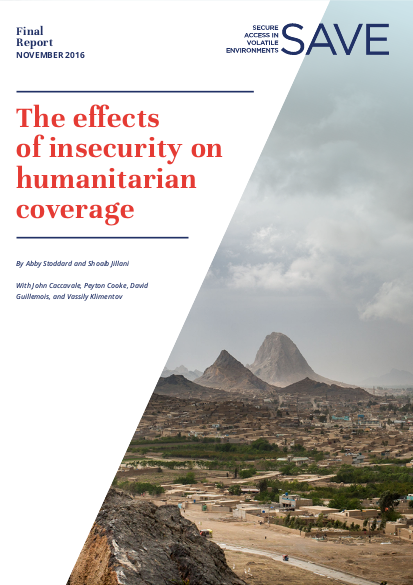
In a small number of crisis-affected countries, humanitarian organisations work amid active conflict and under direct threat of violence. This insecurity, attested to by rising aid worker casualty rates, significantly constrains humanitarian operations and hinders the ability of people in emergencies to access vital aid. How and to what extent this happens is unknown, in part because humanitarian operational presence itself has never been measured.
To assess concretely the impact of insecurity on humanitarian response, the ‘Secure Access in Volatile Environments’ (SAVE) study conducted field research in four of the world’s most insecure operational settings – Afghanistan, Somalia, South Sudan and Syria. The objective was to measure humanitarian field presence relative to the level of need in the particular contexts (i.e. humanitarian coverage), and to determine how this coverage was affected by security conditions. The results of the study show that humanitarian operations are highly determined by security conditions and that coverage of humanitarian needs in war zones is even lower than it might outwardly appear, as aid organisations will typically remain in the country, even after suffering attacks, but will reduce their field presence and adopt new, often suboptimal, operational models to continue programming.